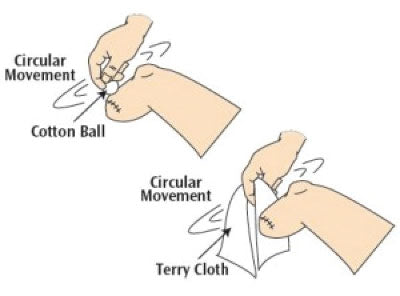Everything You Need to Know About Desensitization Exercises
In your rehabilitation journey, living healthily post-surgery will help you recover much faster and feel better sooner both physically and mentally. However, a skilled physical therapist can also teach you simple exercises to increase your comfort in everyday living, how to manage your prosthesis, and how to work through movements while minimizing pain with desensitization exercises.
What are desensitization exercises?

Desensitization exercises are designed to help decrease hypersensitivity that may occur after amputation. [Source: Laura Inverarity, DO] You may experience phantom limb pain (PLP) after surgery, and this might cause some sensitivity at the end of your limb, rendering prosthesis use uncomfortable or even downright impossible. Desensitizing your limb, which includes both massaging and wrapping, can help manage the pain if done on a regular basis.
Why are desensitization exercises important?
Amputation can create a hypersensitive area along the line of incision which may cause pain and discomfort when wrapped in a bandage; this can eventually interfere with your prosthesis use. Special desensitization exercises help manage pain through a gradual progression of texture and pressure against the affected area. As your physical therapist consistently applies a different type of changing input to the nerves of your residual limb, the hypersensitivity decreases over time until your prosthesis feels more natural to use.
Things to remember prior to desensitizing
- Have a conversation with your doctor or health care provider before undergoing any type of exercise. Make sure it's safe for you and that your body is physically ready and capable of performing these exercises.
- Always keep your open incision protected. Do not rub any material over your wound, as it may cause an infection to permeate through the skin.
Let's begin!
- Lightly brush a smooth material (like silk) along the hypersensitive portion of your skin.
- Rub the material back and forth, in circular motions, and in random directions.
- Again, remember to cover the hypersensitive area.
- It’s perfectly normal to feel some discomfort, itchiness, or pain to some extent as your residual limb is exposed to the rubbing material. Keep rubbing over the area for a few minutes and repeat this several times a day. The uncomfortable sensations will eventually disappear, or at least decrease, when you stop rubbing over the hypersensitive area.
- As your residual limb gets used to the sensation, slowly apply more pressure onto the area as you continue your desensitization exercises. You may start to use rougher materials and more pressure as you progress. Perform these exercises every two hours for 15 minutes each day.
Use different textures
Different textures and materials can help slowly decrease the pain and discomfort levels you experience. As your residual limb feels more familiar with a certain texture, you can progress to more rigid, tougher materials as you go along. You may follow this progression:
- Silk (or satin)
- Cotton
- Velvet (or chenille)
- Corduroy
- Wool
Remember: there is no need to rush; your sensitivity and tolerance to each texture may vary. Take your time when switching to a different material, as there are no set rules for when you should progress.
Talk to your physical therapist or doctor about possible comprehensive rehabilitation programs you can be a part of. Have an open conversation with your health care provider as well so you know exactly what to expect when you engage in these physical activities.










































































